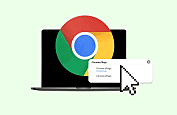
Are you wondering ‘what is Google working on?’ Fuchsia is the answer. But what is Fuchsia? Let’s dive into it.
It was in 2016 that Google started working on a new operating system known as project Fuchsia that sent the mobile industry into a twirl. Many experts speculated that Google Fuchsia OS will be the next big thing in the operating system ecosystem and is considered as the next Android replacement OS. But till now, there is no single word from Google on its new OS in making.
A new spark was added in Google Fuchsia OS last year with the uncovering of its early home screen design. And then we witnessed it running in the Pixelbook, hinting at a change in the operations of Android and Chrome OS.
So, when so much is going on in project Fuchsia, it has become crucial to know about this emerging operating system.
As Google OS is in the very early stages of development, it will be interesting to know how will it differ from Android and Chrome and will it be resilient enough to replace either one.
Google Fuchsia OS first appeared on the GitHub repository as an open-source operating system from Google.
As per the initial assessment made by the technology press, the idea behind Google new operating system for mobile was to make it a “universal” operating system, which can run on every platform like phones, tablets, connected appliances, smart home hardware, and more.

The concept of the universal operating system is tested by Microsoft and Apple in the form of Windows 10 and real OS X respectively but didn’t turn up as expected. Linux is the only platform that somewhat related to the universal operating system term. Linux kernel is extensively used in Chrome OS, Android, routers and modems, set-top boxes, and smart devices; thus making it work on various platforms.
Now it’s Google who is trying its hand on crafting an ultimate universal operating system in the form of Fuchsia, its new operating system.
Why Can Google Fuchsia OS Replace Android And Chrome?
Google next OS is designed from scratch and evolved in the form of a micro-kernel named Zircon. On the other hand, Android and Chrome OS employ a heavily-modified version of the Linux kernel. So, to get off with a load of a heavy version of Linux kernel, the micro-kernel of Google OS can come really handy.
The conventional operating system kernel is way different from microkernel, but one thing that is the most significant in both is that microkernels are built from the ground, which works perfectly fine for efficiency and flexibility.
At a time when we have shifted to smaller, more efficient, and more portable hardware, it’s important that a micro-kernel should be brought into use and it makes the Fuchsia as an ideal fit for the next-generation operating system.

One thing that Google will try to bring into force with its new operating system is that it will take full control of the open-source OS platform, even if its partner companies distribute it.
Earlier, Android was rolled out as an open source operating system, which is heavily fractured at the consumer level. Also, Chrome OS, which is technically an open-source operating system too is locked-down by its licensing terms. Therefore, it makes more sense to build an operating system that is governed more by the parent company, rather than the users.
Will Developers be Affected by Google’s New OS - Fuchsia?
Presently, developers don’t have access to the Fuchsia operating system, but when it will be made available, developers will be free to develop apps using any programming language with the help of the new Flutter software development kit.
It is known that Flutter framework rightly supports the development of apps that comes compatible with Fuchsia, Android, and iOS. Hence, it will be a boon for the developer community, as one app for all the platforms would be possible with a minimum of investment.
Another benefit of Flutter is that it’s built around Material Design, Google’s current visual design standard, which is compatible with its Android, Chrome OS, and web properties. It supports advanced UI elements like volumetric shadows and super-smooth 120 FPS animations. It even supports gaming and media applications, but then the performance will also depend upon the hardware setup.

If we consider Chrome OS, most of its apps are web-based, but now it can also run Google Android operating system’sAndroid apps and with each update, its capability is being considerably expanded.
Earlier, a developer confirmed Fuchsia support for the Swift and Objective language as well.
Zac Bowling, a developer working on Fuchsia, said,
“My team is adding support to Apple owned Swift to target Fuchsia.“
Alexander Lash, another Google engineer stated,
“My team is planning to contribute to lib/Syntax - we're interested in linting, formatting, and refactoring.”
With all this in hand, developers will find it easy to launch Google Fuchsia OS or to transit between platforms. As per our assessment, it should be a smooth transition.
What’s it Like to Use Google Fuchsia OS?
The current UI of Google’s new mobile OS is called “Armadillo” and is still being in the testing phase. Expectedly, it goes have some impressive capabilities that may change the way UI is designed for apps.
As we know, the home screen of the new Google mobile OS is featured with a vertically scrolling list of apps. The profile card over here includes some basic settings, a profile image, and the date and time. Then there is a search bar similar to what we have our Android devices and Gboard with some different functionalities.
With no real apps to run on the Google OS, the user will see placeholders, but one can freely experience the multitasking features, which are really impressive. For instance, on dragging one app onto another, there will be an option for split-screen mode and on returning home, more apps can be dragged to use them simultaneously.

What Makes Google Fuchsia OS Special?
There is not much that we can tell you about the Google operating system being in the early stages, here are the elements that make it an interesting pick:
1. The UI
The Material Design of Google OS is one thing that will impress you. It has its own special renderer and Escher that is specially designed for shadows. To give depth to the components, notifications, buttons, windows, and pop up boxes are cleanly layered. The wallpaper looks more like a view out of a window.
Google's new operating system has two layouts:
- A novel mobile-centric design codenamed Armadillo: It drops the shortcuts module and app drawer to make way for Quick Settings, Recent Apps, and the Google Feed.
- A traditional desktop layout codenamed Capybara: It includes a placeholder for quick settings, a taskbar containing the time, and something similar to a start button.
2. Assistant Friendly
From the current use, it seems like Google Fuchsia OS is designed to integrate Google Assistant in a much better way; at least from Android. The usage of a user like on-screen activity, apps drawer, camera use, or anything else will be visible to the Google Assistant.
On holding the home screen, Android analyzes the screen for information, but Fuchsia is expected to go deeper and fetch more information as compared to Android. For instance, while checking out a restaurant in Fuchsia, the user may see the review, then go to the calendar to check dates, and says “Okay Google, “schedule a team lunch,” - guess what? It will be done.

3. Cross-device OS
With an increase in the number of smart devices, we have got phones, tablets, desktops, laptops, and trendy wearables apps. So, to cater all the platforms to work, Google is trying to design Google Fuchsia OS in such a way that it can work on any device with similar user experience.
Today, there is an issue of maintaining progress and context while handling various devices. But with Fuchsia, the user has to sign in to his Google Account and the device will save the information across all the devices.
It’s done with the help of a Ledger, a distributed storage system, which stores everything in the cloud.
4. Architectural Edge
As we know Android and Chrome OS are based on Linux, Android had an issue with patching to the latest Linux kernel because it was reliant on device OEMs, but Treble was introduced to rectify this issue.
Still, some OEMs are not including Treble in their devices and leaving the users vulnerable to new exploits.
But if we talk about Fuchsia, it has its own custom kernel, Zircon, which can be upgraded at will. To make it happen, applications' access to direct kernel is tied down. It adds more security for the device and makes the app compatible after a system upgrade.
A Quick Look at Google Fuchsia OS Recap
- Fuchsia is a Google new OS, which is still in its early development phase;
- It’s highly scalable and secure due to the Zircon kernel;
- It may replace Android or Chrome OS;
- App Developers will find it easy to handle;
- Will support cross-platform;
- Android apps will run on Fuchsia;
When Can We Have Fuchsia?
As said, Google Fuchsia OS is in its early stages and frankly speaking, we can’t speculate on its arrival yet. Even Google is tight-lipped about Fuchsia’s development, leave about its rollout. Till now, Google has only confirmed Fuchsia to be a real thing that is getting significant support.
The virtual existence of Fuchsia can be taken out from Google’s own repository and GitHub, stating Fuchsia is its source code.
According to all the available facts and analysis, it’s hard even to expect Google’s upcoming operating system because many a time, projects can be hampered due to multiple factors. If everything goes well, Fuchsia might see the light of the day, and we all are excited about the same.
If ever Google's new OS makes an entry into the market, it is most likely to be the successor to Android and possibly Chrome.



















